In the months since the Black Lives Matter protests that swept the globe, statues of slave traders and tyrannical kings have been removed all across the UK and Europe.
Bristol slave trader Edward Colston is gone. So is the Docklands statue of 18th century slave owner Robert Milligan.
But one is still standing in the heart of east London: Robert Geffrye, the former Mayor of London who made his money off the forced labour and enslavement of African men, women and children.
On Saturday, a group of 50 or so people – including at least three members of Hackney Council – gathered to protest outside the locked gates of the Museum of the Home, where the statue of Geffrye stands above its entrance. A parked police van watched the proceedings from the housing estate opposite the building.
As passing cars beeped their horns in support, the protesters and speakers expressed their dismay that the Museum of the Home had chosen to ignore a public consultation that showed majority support for removing the statue. The original statue was built in 1714, a decade after Geffrye funded the almshouses that make up the museum today, and was replaced with a replica in 1912.
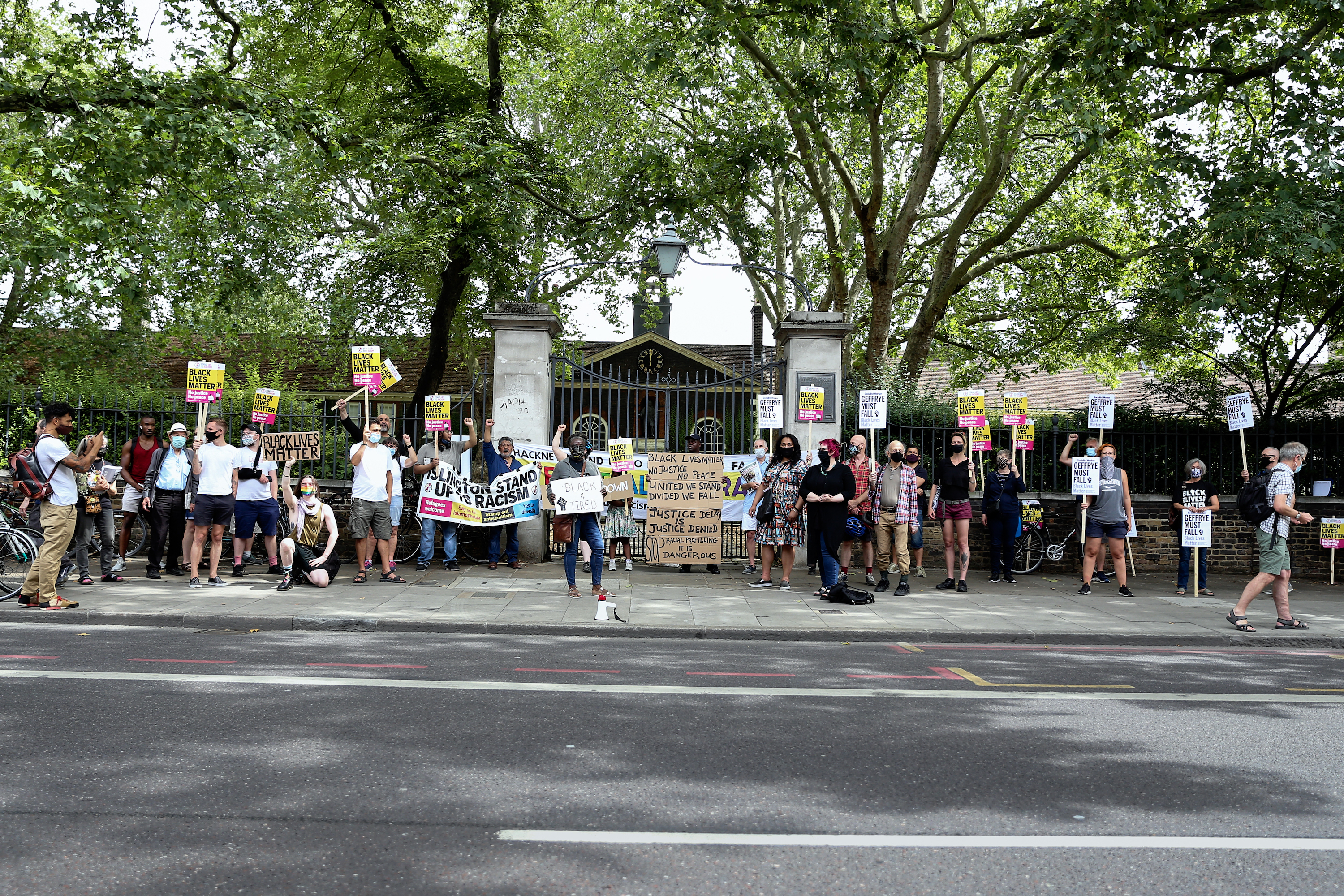
In a statement on its website, the Museum of the Home said: “The board believes that the Museum should reinterpret and contextualise the statue where it is, to create a powerful platform for debate about the connection between the buildings and transatlantic slavery.”
VICE spoke to protesters on the day about why the Geffrye statue should fall. The Museum did not respond to our request for further comment.
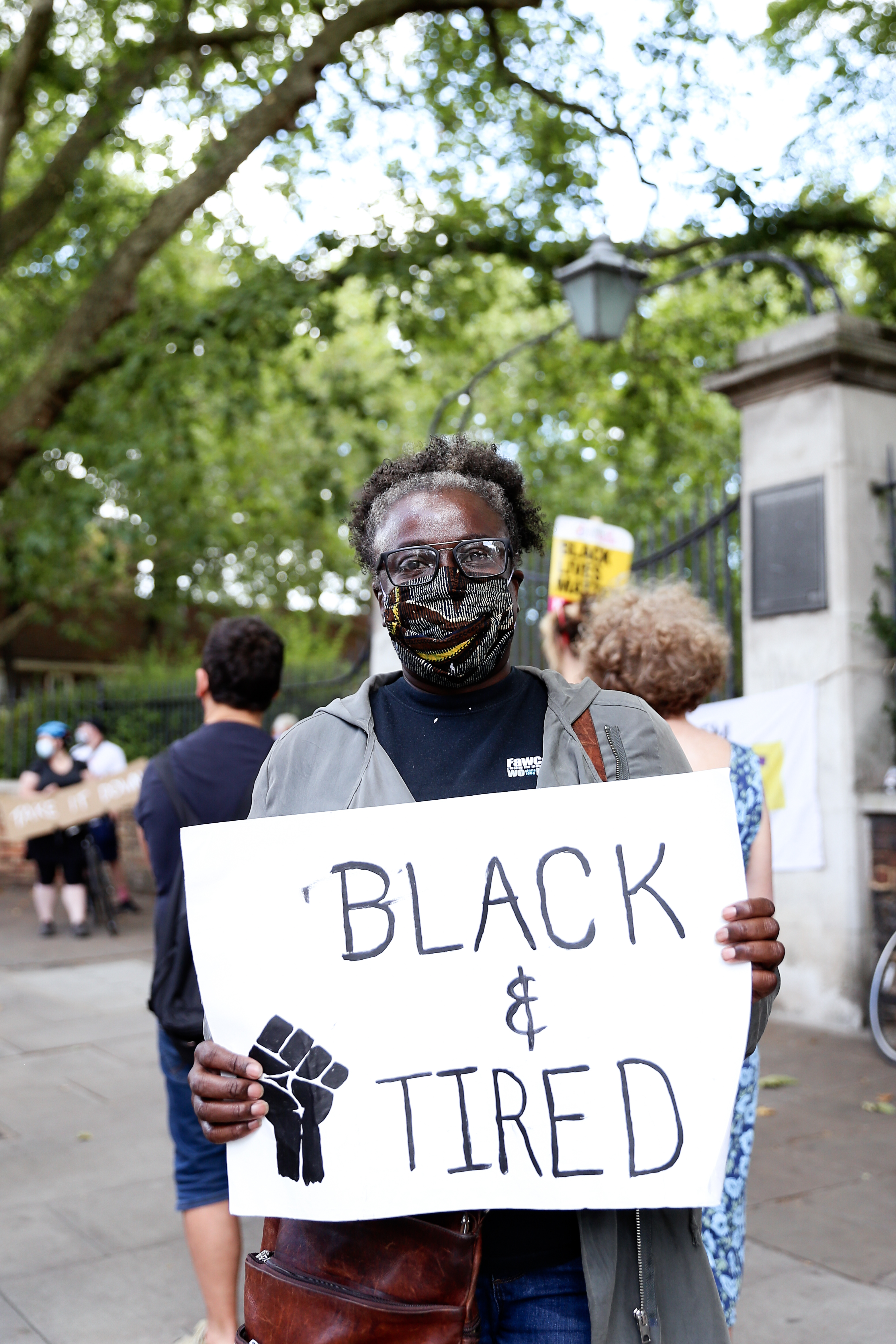
CAROL WILLIAMS, HACKNEY COUNCILLOR AND COUNCIL CABINET MINISTER FOR EMPLOYMENT, SKILLS AND EQUALITIES
Why are you here today?
I’m here because I am tired. I grew up in the Midlands and I grew up at a time when the National Front were hiding razor blades behind posters, because if anyone came and ripped it down, they’d get their fingers shredded. We may not have that same sort of action today, but we still see it and we still feel it as Black people every single day. I’m tired of it and it needs to change. That’s why I have this sign today.
How do you feel about the statue itself?
I’ve lived by this museum for a long time and I didn’t know its history, I had no idea who he was, and I’m ashamed of that – I wish I’d known earlier. I’m glad that Hackney Council led a consultation alongside The Museum of the Home about the future of that statue. I’m glad that we are working alongside a community to change the names of roads and public spaces across the borough. Everyone here has said how disappointed they are about the results of the consultation and of the decision that the board has made and I am equally disappointed. This was a real opportunity for them to make a change and to make a statement, and they failed to do that.
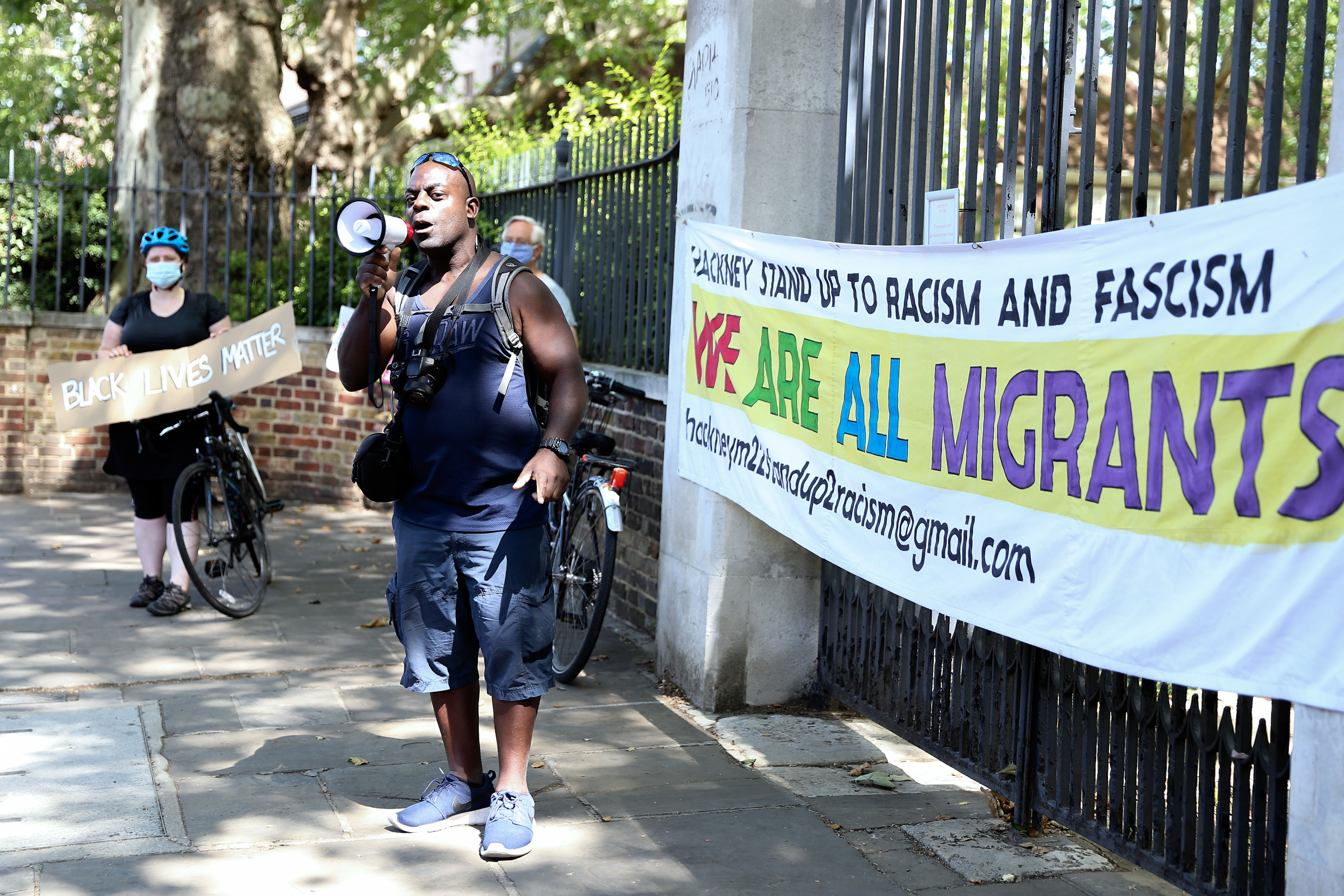
DEAN RYAN, 54, ORGANISER AND YOUTH JUSTICE WORKER
Why did you organise the protest today?
A few months back when we found out about this statue and its origins, the council launched an online survey. We told people to vote on that survey. The results came out saying that they wanted the statue taken down, but these people have decided that actually what they want to do is ignore democracy and ignore the decisions. We’re here to say, actually we’re not going to take that, we want these symbols gone. But it’s not just about getting rid of the symbols of slavery, we want actually to make real material change. This battle is just one of many that we will be fighting over the number of months and years to come.
Would you be tempted to try to take it down yourself, like what happened in Bristol?
Hopefully [the Museum of the Home] are going to see sense and take it down, but if people want to come back with ropes and chains and pull the statue down I’m certainly not going to stand in their way.
Will these protests continue?
These protests are definitely going to continue. We spoke about a lot of things today: we want to get decent pay for hospital workers, we’re going to keep fighting Section 60 orders of police stop and search which disproportionately targets Black people. This isn’t just a moment in time – it’s a movement. We’re going to keep moving and fighting.
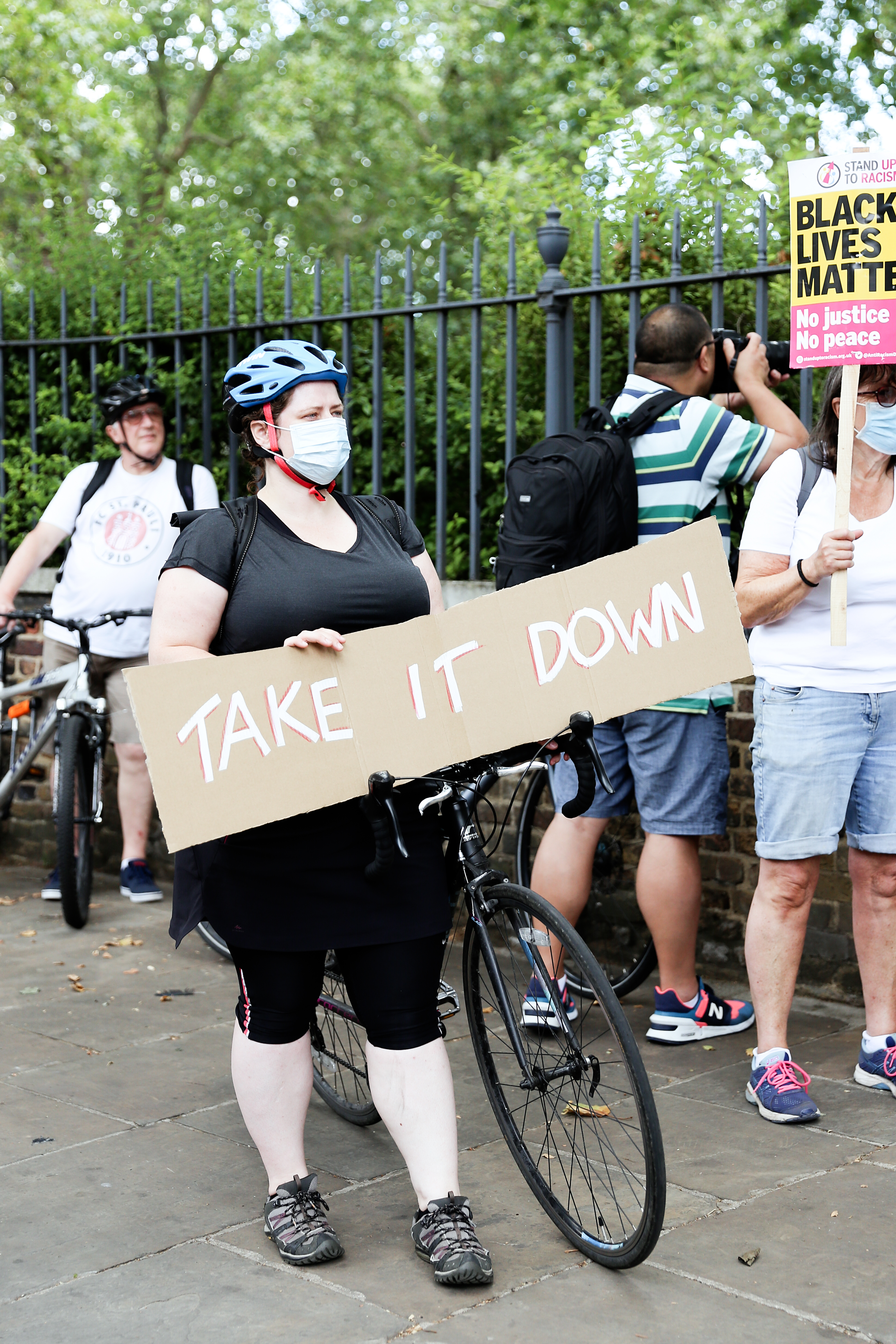
ELOISE PATERSON, 42, RADIOGRAPHER
What brought you out to this protest today?
Today I’m coming here is because of the museum. My brother works in a museum. He told me, considering their own understanding of their history, [the Museum of the Home] knows they need to take this down. Hackney had the highest turnout for Black Lives Matter protests in London, they know they need to take it down. In choosing to ignore the consolation which had Black people in it, had Black children responding to that consultation saying that they want the statue taken down… I feel it is an inherently racist act.
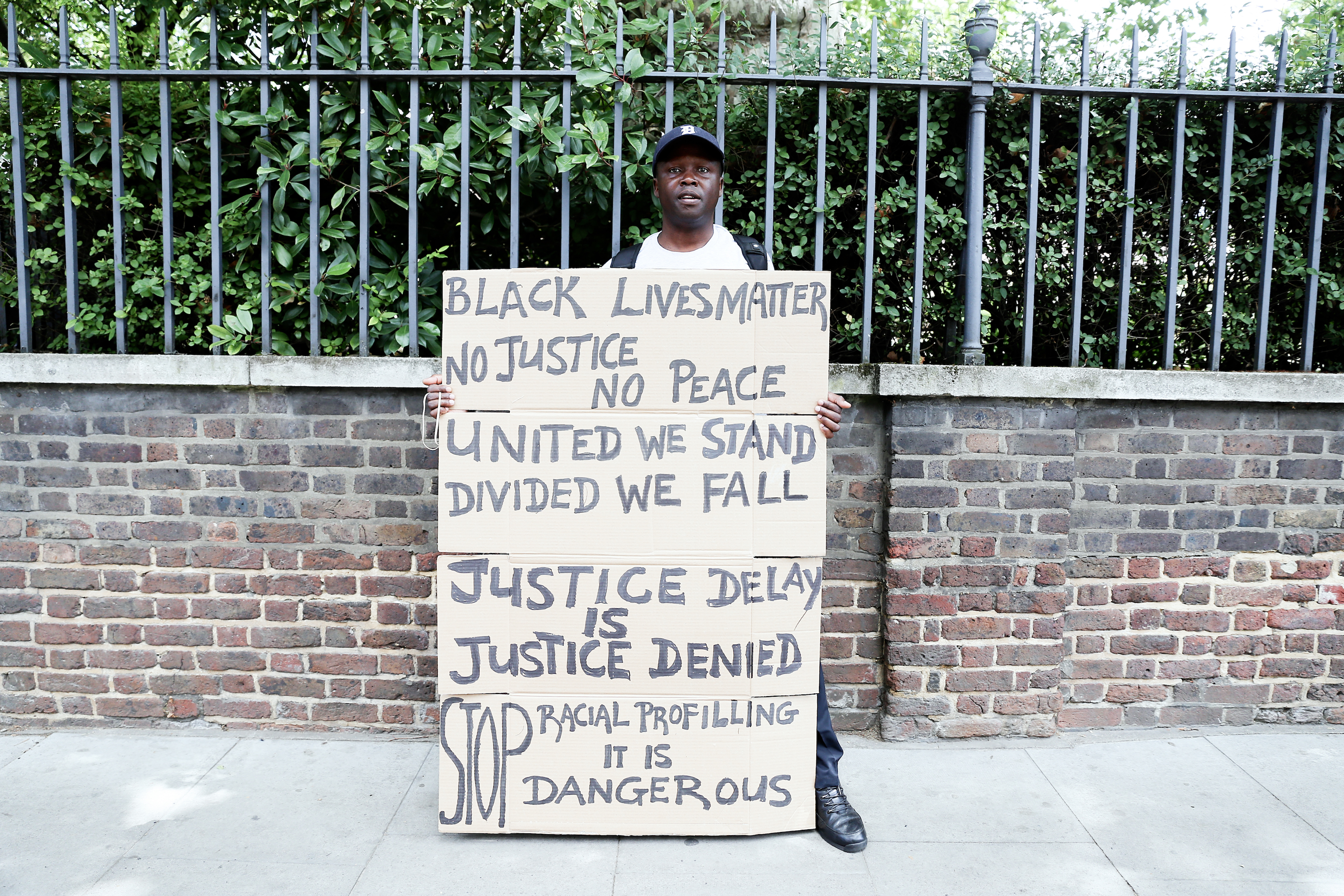
DEXTER LEANDER, 52, COACH DRIVER
Why do you think this statue should be taken down?
This statue is a part of unethical behaviour from the past and things like this must stop going on. It’s the 21st century and we need changes. This statue must be removed ASAP and we’re going to keep campaigning until we succeed in getting this statue removed.
As a Black man, how do you feel about these statues staying where they are?
These statues are here from centuries ago. We’re living in a new world now, we live in a changed world, thing like this should not be there [as] intimidation for people like me and other ethnic groups.
Where do you think the statue should be taken if it is removed?
Probably a museum is the safest place, because people have a choice to go in there to see it if they want to. Where it is at the moment, it’s in the public view. Every time you pass here and you look, it’s there in front of your face.
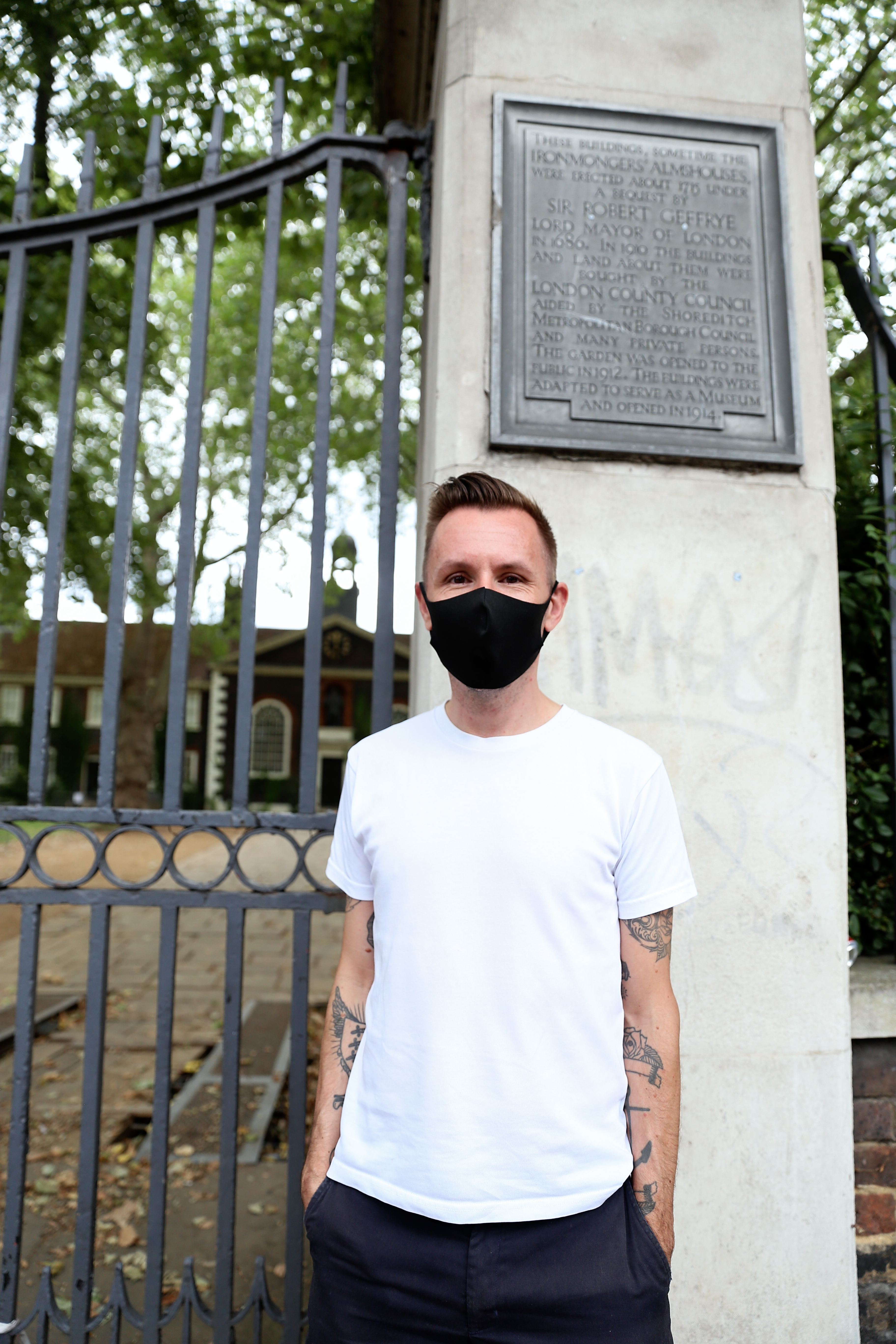
ROBIN PRIESTLY, 43, CAMPAIGNER
Why are you here today?
I’m here today because I live just across the road in the Geffrye Estate. I started a petition a couple of months ago to get the statue taken down. About 4,500 people have signed it now.
Initially, before the consultation kicked off, I was trying to harass them with the petition and they were like, “Oh don’t worry, we’re going to do this consultation, we’re going to ask the public for all of their views”. I handed them the petition having encouraged everyone who signed it to fill out their consultation. Then on Wednesday they announced that they’d looked at the results and [said] “Although most people wanted to take it down we’ve decided to keep it up!” I was raging, to be honest.
I’ve lived in this estate for almost 10 years and I always thought he was just some like nice philanthropic old man that gave a load of his money away, but it was never his money. It’s come out it was money from stolen and broken lives. But still he’s revered up in pride of place and I think it’s wild that they’re not taking it down.
What do you think will happen if they keep ignoring the public?
To be honest, I think it’s going to come down at some point and I think it would be better if they took it down. The way they’ve done this consultation and then explicitly ignored [it] – it’s just like in Bristol where they had petitions and consultations about Coulston Hall and Coulston’s statue and they ignored it all, and then at some point history took over. If I was on the board of this place, I’d be thinking, “Why am I trying to dig my heels in over this character who was a horrible man?” There’s nothing to be gained by this. They have a perfectly good museum that they could bung it in.
This article originally appeared on VICE UK.
from VICE https://ift.tt/31ke6Ce
via cheap web hosting
No comments:
Post a Comment